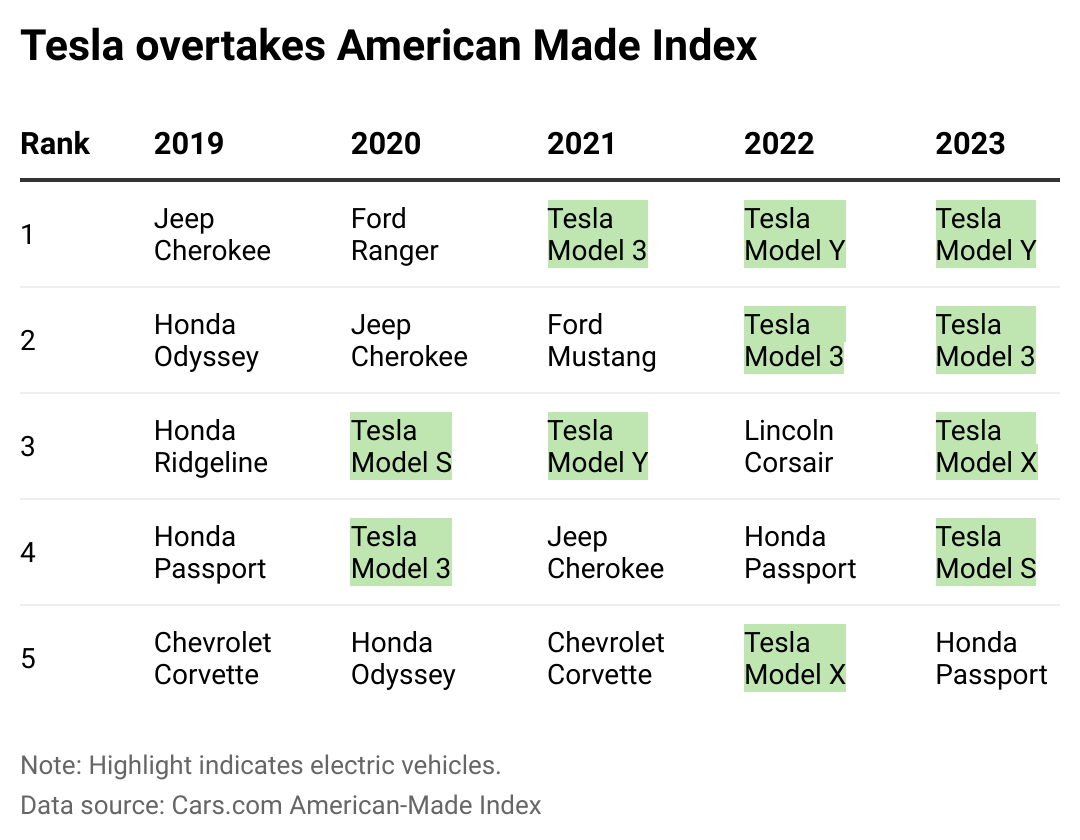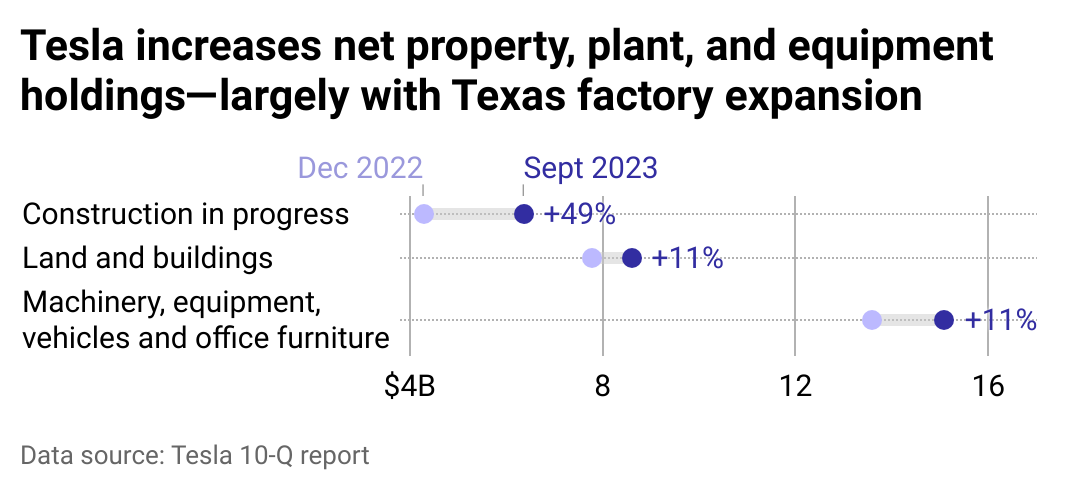The 'most American' vehicle for the last 3 years has been electric
Published 9:00 pm Wednesday, December 13, 2023
The ‘most American’ vehicle for the last 3 years has been electric
The most American vehicle can’t be filled up at a gas station—and it doesn’t feature an extended cab or a truck bed. In fact, the stereotypical pickup truck hasn’t been considered the most American vehicle in four years.
Electric-powered sedans have emerged at the top of the market in terms of domestically sourced work, components, and assembly lines. For three years, EV maker Tesla has bested established domestic manufacturers of mainly combustion engine vehicles, including Ford and General Motors, earning the distinction of “most American” as defined by the widely cited Cars.com index.
CheapInsurance.com analyzed the emergence of electric cars as the “most American” vehicles on the market using data from Tesla’s earnings reports and the Cars.com index. Cars.com’s index considers several factors related to manufacturers’ sourcing of materials, labor, and financial investments in U.S.-based facilities.
![]()

CheapInsurance.com
Electric cars—namely Teslas—have quickly overtaken the American Made Index
The most popular American vehicle on the market today is any Tesla model—except the Cybertruck. In 2023, the EV maker swept the ranking’s top four places for the first time since the index originated. As recently as 2019, not a single Tesla appeared in the top five most American vehicles.
What’s changed? Texas is what’s changed, or more specifically, Tesla’s opening of a massive factory in the state’s capital of Austin.
The expansion of the company’s footprint in the U.S. and the addition of tens of thousands of American workers to the payroll boosted the company’s vehicles higher in the index, according to the authors.
For the second year in a row, the most American vehicle on the American Made Index is the Tesla Model Y, manufactured in Austin. Tesla’s Model 3, X, and S are assembled in California and take the second, third, and fourth spots, respectively, in the most recent ranking.

CheapInsurance.com
Tesla invests in Texas
In Austin, Tesla produces its Model Y as well as batteries for its vehicles—the equivalent of an engine in a gasoline-run vehicle. It will also be the assembly center for the company’s forthcoming pickup truck and commercial semi-truck.
Tesla’s more than $6 billion in ongoing construction costs are primarily attributable to the building of the Giga Texas plant, according to a September 2023 SEC filing. Since the plant opened in 2022, the company has announced plans to invest another $770 million.
Consumers should prepare to see more electric vehicles, potentially from other automakers. The ramp-up in American production of electric vehicles isn’t unique to Tesla, an early entrant to the space when it established its first factory in Fremont, California, in 2010, shortly after going public.
An estimated $52 billion in North American-based investments has been announced by manufacturers of electric vehicle batteries, vehicles, and other parts of the EV supply chain, according to the most recent figures from the International Energy Agency.
Part of the increase in domestication of electric vehicle production has been in response to a presidential administration that’s issued new regulations and incentives for manufacturers with the goal of getting electric vehicles to comprise 50% of sales by 2030. According to the Federal Reserve, EV subsidies in the Inflation Reduction Act championed by the Biden administration even spurred Tesla to announce the first-ever lithium refining plant near its new headquarters in Texas.

CheapInsurance.com
Tesla keeps production domestic
Where Michigan has long been the center of combustion engine vehicle production, southern U.S. states have emerged as winners of significant industrial investments from automakers producing electric vehicles and EV components like batteries.
A war between states to see which can offer the most attractive tax incentives and subsidies has favored states like Texas, where leadership has wooed relocating executives for decades with the allure of zero income taxes, plentiful workers, and lower rates of unionization helping companies save on labor costs.
In 2021, Amazon-backed EV startup Rivian selected Georgia for a coveted manufacturing plant and the jobs that came with it. Other manufacturers are building plants in North Carolina, Tennessee, and Kansas.
First coined by Tesla and now used industrywide, these factories have become known as “gigafactories,” a term that borrows part of the word gigawatt from the electrical measurement equal to 1 billion watts of energy. A gigafactory can house production for batteries as well as vehicle assembly. Tesla’s Buffalo Gigafactory, known as Gigafactory 2, only produces battery and solar cell components.
Story editing by Ashleigh Graf. Copy editing by Kristen Wegrzyn.
This story originally appeared on CheapInsurance.com and was produced and
distributed in partnership with Stacker Studio.






